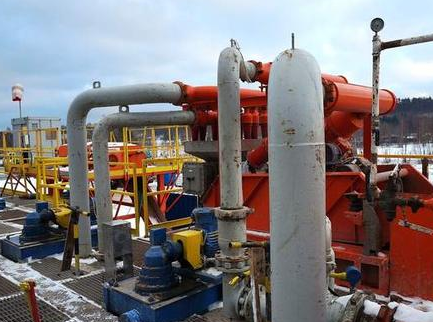Natural gas industry chain analysis
Third, gas storage and transportation
Due to the distance between China's natural gas deposits and the main market, storage and transportation facilities are needed between the time the gas leaves the wellhead, the ship and the client. China's natural gas storage and transportation system is composed of backbone pipelines, provincial pipelines connecting LNG receiving stations, LNG liquefaction plants, LNG tankers and underground gas storage, among which the storage and transportation facilities of gaseous natural gas are backbone pipelines, provincial pipelines and underground storage. The following part will focus on the development of gas storage and transportation facilities, business models, pricing methods and residential - non-residential gas price integration.
Transportation pipeline approval is complicated and the investment recovery period is long, and the development of underground gas storage is lagging behind

In the storage and transportation of gaseous natural gas, the backbone pipeline refers to the long transmission pipeline between the wellhead and the provinces, and the provincial pipeline refers to the regional short-distance pipeline between the city distribution pipeline after the natural gas enters the province, and the gas source is mainly imported pipeline gas and self-extracted natural gas. Inter-provincial (municipal) pipeline projects need to be submitted to the National Development and Reform Commission for approval, and need to be approved by the Ministry of Planning and Construction, the Ministry of Land and Resources, the Ministry of Environmental Protection and other departments of the provinces and cities through which the pipeline passes. The procedures are complicated and the approval period is long. Natural gas pipeline investment scale is large, according to the investment situation of the domestic pipeline has been put into use, the investment cost per kilometer of pipeline at the level of 10 million to 30 million, and the pre-construction investment depends on the recovery of pipeline transportation costs, the overall recovery cycle is long. Underground gas storage is the most effective way to solve the problem of imbalance between gas supply and gas use. Compared with other gas storage facilities (surface storage tanks and high-pressure pipelines), it has the advantages of large gas storage capacity, good economy, and not being affected by climate, which can solve the problem of seasonal gas use imbalance. Compared with other peak loading facilities, underground gas storage has great advantages, and it is the main facility for strategic natural gas reserve and commercial reserve. The construction of underground gas storage in China started relatively late. In the 1990s, with the construction of Shan-Beijing natural gas transmission pipeline, the country began to vigorously study the construction of underground gas storage technology in order to further ensure the safe gas supply to Beijing and Tianjin. In 2000, Dagang Oil Field used the depleted gas reservoir to refer to the first underground gas storage "Dazhangtuo underground gas storage". As of the end of March 2018, the total effective working gas capacity of China's natural gas storage in service was 7.339 billion cubic meters, less than the national gas consumption for 20 days. According to the 13th Five-Year Plan, the national natural gas consumption is expected to be close to 300 billion cubic meters, and the current effective working gas (gas storage capacity consists of effective working gas and bottom gas, of which the effective working gas includes peak gas and emergency gas) is 2.45% of the annual consumption, if the 13th Five-Year storage construction target of 14.8 billion cubic meters is completed, The proportion has increased by 4.83%, which is still a large gap compared with the international proportion level of 10% to 15%, and the development of underground gas storage is lagging behind.
- EMERSON
- Honeywell
- CTI
- Rolls-Royce
- General Electric
- Woodward
- Yaskawa
- xYCOM
- Motorola
- Siemens
- Rockwell
- ABB
- B&R
- HIMA
- Construction site
- electricity
- Automobile market
- PLC
- DCS
- Motor drivers
- VSD
- Implications
- cement
- CO2
- CEM
- methane
- Artificial intelligence
- Titanic
- Solar energy
- Hydrogen fuel cell
- Hydrogen and fuel cells
- Hydrogen and oxygen fuel cells
- tyre
- Chemical fiber
- dynamo
- corpuscle
- Pulp and paper
- printing
- fossil
- FANUC
- Food and beverage
- Life science
- Sewage treatment
- Personal care
- electricity
- boats
- infrastructure
- Automobile industry
- metallurgy
- Nuclear power generation
- Geothermal power generation
- Water and wastewater
- Infrastructure construction
- Mine hazard
- steel
- papermaking
- Natural gas industry
- Infrastructure construction
- Power and energy
- Rubber and plastic
- Renewable energy
- pharmacy
- mining
- Plastic industry
- Schneider
- Kongsberg
- NI
- Wind energy
- International petroleum
- International new energy network
- gas
- WATLOW
- ProSoft
- SEW
- wind
- ADVANCED
- Reliance
- YOKOGAWA
- TRICONEX
- FOXBORO
- METSO
- MAN
- Advantest
- ADVANCED
- ALSTOM
- Control Wave
- AB
- AMAT
- STUDER
- KONGSBERG
- MOTOROLA
- DANAHER MOTION
- Bently
- Galil
- EATON
- MOLEX
- Triconex
- DEIF
- B&W
- ZYGO
- Aerotech
- DANFOSS
- KOLLMORGEN
- Beijer
- Endress+Hauser
- MOOG
- KB
- Moxa
- Rexroth
- YAMAHA
- Johnson
- Westinghouse
- WAGO
- TOSHIBA
- TEKTRONIX


Email:wang@kongjiangauto.com



































































































































